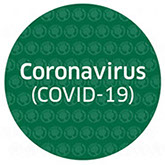Managing the long-term effects of COVID-19
Most people’s symptoms of COVID-19 resolve within 12 weeks. Yet for some people symptoms can continue beyond this time or new ones can develop.
This guideline covers the care of people who have signs and symptoms that:
- develop during or after an infection that is consistent with COVID-19
- continue for more than four weeks and are not explained by an alternative diagnosis.
This is also known as long COVID. The recommendations in this guideline will be of interest to:
- general practitioners (GPs) and members of the primary care team
- healthcare professionals in specialist secondary care services
- occupational therapists, rehabilitation medicine staff, and social workers.
It will also be of interest to:
- people experiencing long-term symptoms of COVID-19, their family and carers
- supportive organisations in the voluntary sector
- policy makers.
Keeping up to date
The guideline on the website is always the most up to date and reflects what we currently know about the topic. This guideline was first issued in 2020 and updated in November 2021.
Clinical trials into the management of long-term effects of COVID-19 are ongoing. The National Institute for Health and Care Excellence (NICE) continues to check the publication of new evidence. They consider whether the new evidence would change any recommendations in the guideline. If a change is needed the guideline development group is brought together to discuss it. No evidence to update the recommendations has been found since the last update in November 2021.
How this guideline was developed
This guideline was developed by SIGN, NICE and the Royal College of General Practitioners (RCGP). Developing NICE guidelines: the manual (Appendix L: Interim process and methods for guidelines developed in response to health and social care emergencies).
![]() Current 3-7 years
Current 3-7 years

Guideline
- 1 Identification
- 2 Assessment
- 3 Investigations and referral
- 4 Planning care
- 5 Management
- 5.1 Self-management and supported self-management
- 5.2 Multidisciplinary rehabilitation
- 5.3 Additional support
- 6 Follow up, monitoring and discharge
- 7 Sharing information and continuity of care
- 8 Service organisation
- 9 Common symptoms
- 10 Recommendations for research
- 11 Equality considerations
- 12 Methods and evidence reviews